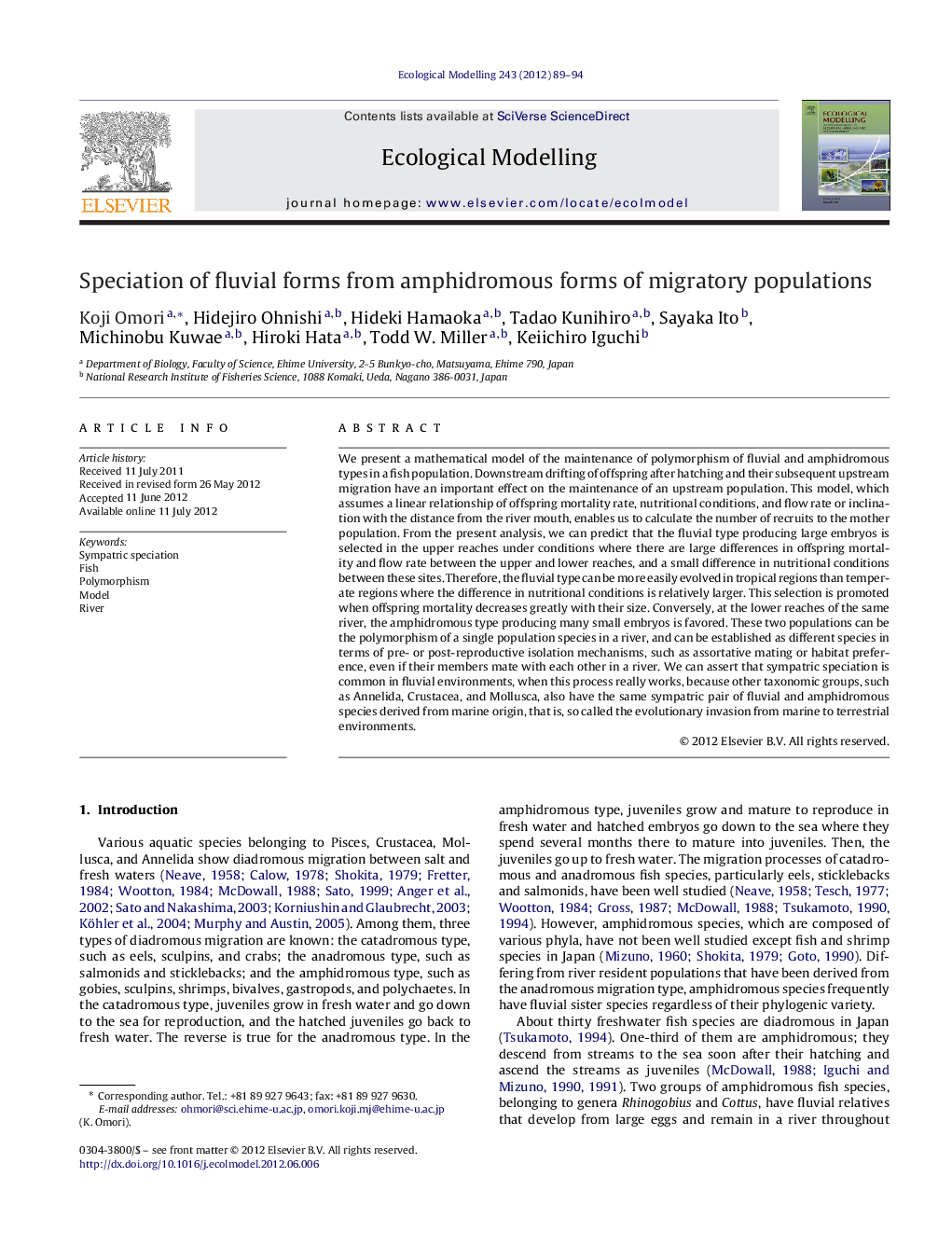| کد مقاله | کد نشریه | سال انتشار | مقاله انگلیسی | نسخه تمام متن |
|---|---|---|---|---|
| 4376336 | 1617502 | 2012 | 6 صفحه PDF | دانلود رایگان |

We present a mathematical model of the maintenance of polymorphism of fluvial and amphidromous types in a fish population. Downstream drifting of offspring after hatching and their subsequent upstream migration have an important effect on the maintenance of an upstream population. This model, which assumes a linear relationship of offspring mortality rate, nutritional conditions, and flow rate or inclination with the distance from the river mouth, enables us to calculate the number of recruits to the mother population. From the present analysis, we can predict that the fluvial type producing large embryos is selected in the upper reaches under conditions where there are large differences in offspring mortality and flow rate between the upper and lower reaches, and a small difference in nutritional conditions between these sites. Therefore, the fluvial type can be more easily evolved in tropical regions than temperate regions where the difference in nutritional conditions is relatively larger. This selection is promoted when offspring mortality decreases greatly with their size. Conversely, at the lower reaches of the same river, the amphidromous type producing many small embryos is favored. These two populations can be the polymorphism of a single population species in a river, and can be established as different species in terms of pre- or post-reproductive isolation mechanisms, such as assortative mating or habitat preference, even if their members mate with each other in a river. We can assert that sympatric speciation is common in fluvial environments, when this process really works, because other taxonomic groups, such as Annelida, Crustacea, and Mollusca, also have the same sympatric pair of fluvial and amphidromous species derived from marine origin, that is, so called the evolutionary invasion from marine to terrestrial environments.
► We point out a possibility of sympatric speciation from amphidromous species to fluvial species.
► To support this possibility, we construct a model for evaluating adaptive value of each type of species.
► By the model, we relate adaptive value of these types to fluvial environments.
Journal: Ecological Modelling - Volume 243, 24 September 2012, Pages 89–94